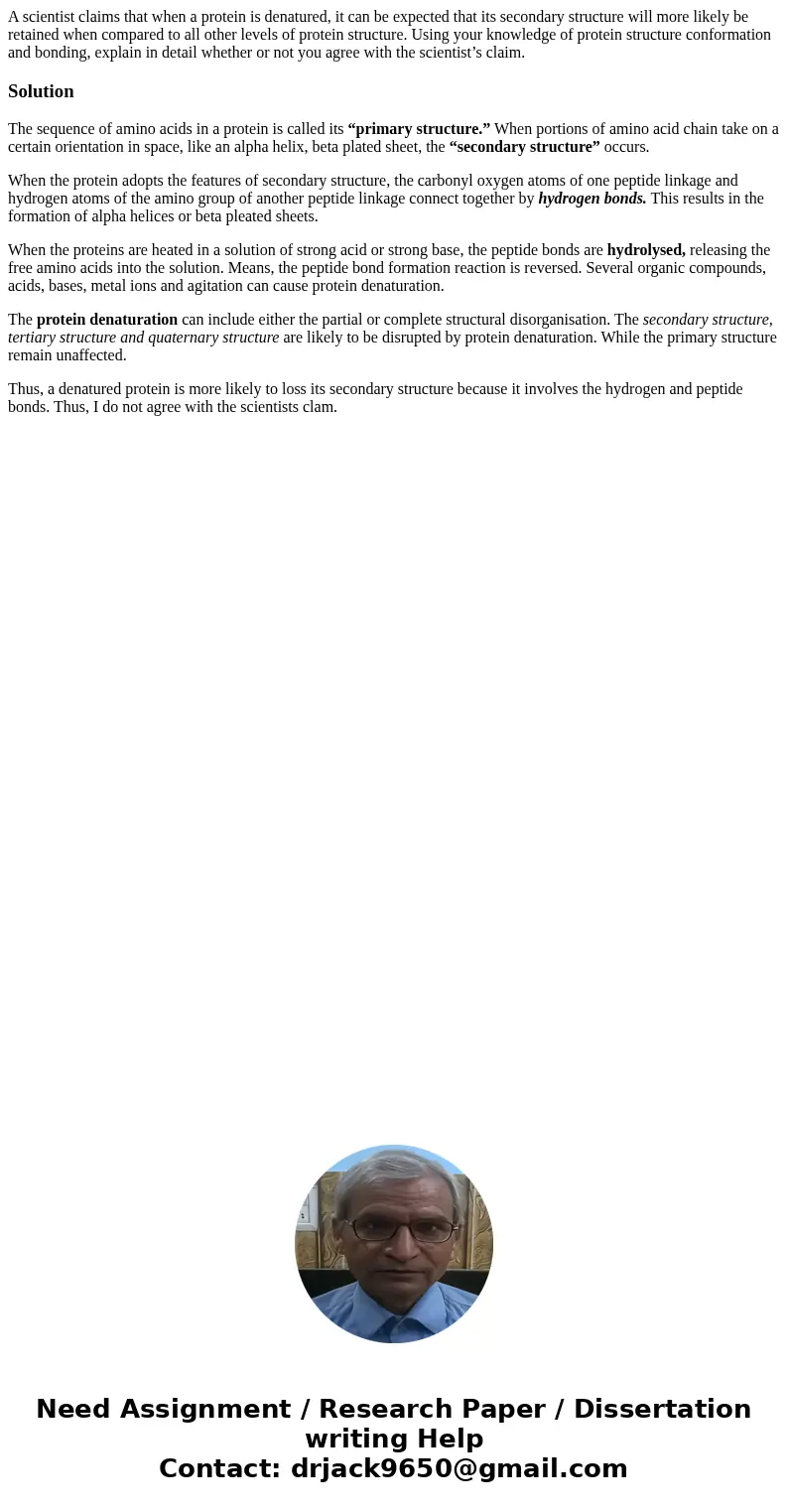A scientist claims that when a protein is denatured it can b
A scientist claims that when a protein is denatured, it can be expected that its secondary structure will more likely be retained when compared to all other levels of protein structure. Using your knowledge of protein structure conformation and bonding, explain in detail whether or not you agree with the scientist’s claim.
Solution
The sequence of amino acids in a protein is called its “primary structure.” When portions of amino acid chain take on a certain orientation in space, like an alpha helix, beta plated sheet, the “secondary structure” occurs.
When the protein adopts the features of secondary structure, the carbonyl oxygen atoms of one peptide linkage and hydrogen atoms of the amino group of another peptide linkage connect together by hydrogen bonds. This results in the formation of alpha helices or beta pleated sheets.
When the proteins are heated in a solution of strong acid or strong base, the peptide bonds are hydrolysed, releasing the free amino acids into the solution. Means, the peptide bond formation reaction is reversed. Several organic compounds, acids, bases, metal ions and agitation can cause protein denaturation.
The protein denaturation can include either the partial or complete structural disorganisation. The secondary structure, tertiary structure and quaternary structure are likely to be disrupted by protein denaturation. While the primary structure remain unaffected.
Thus, a denatured protein is more likely to loss its secondary structure because it involves the hydrogen and peptide bonds. Thus, I do not agree with the scientists clam.

 Homework Sourse
Homework Sourse